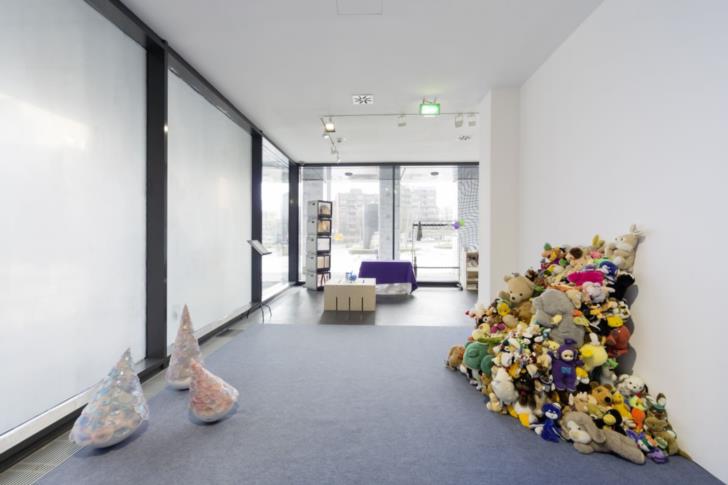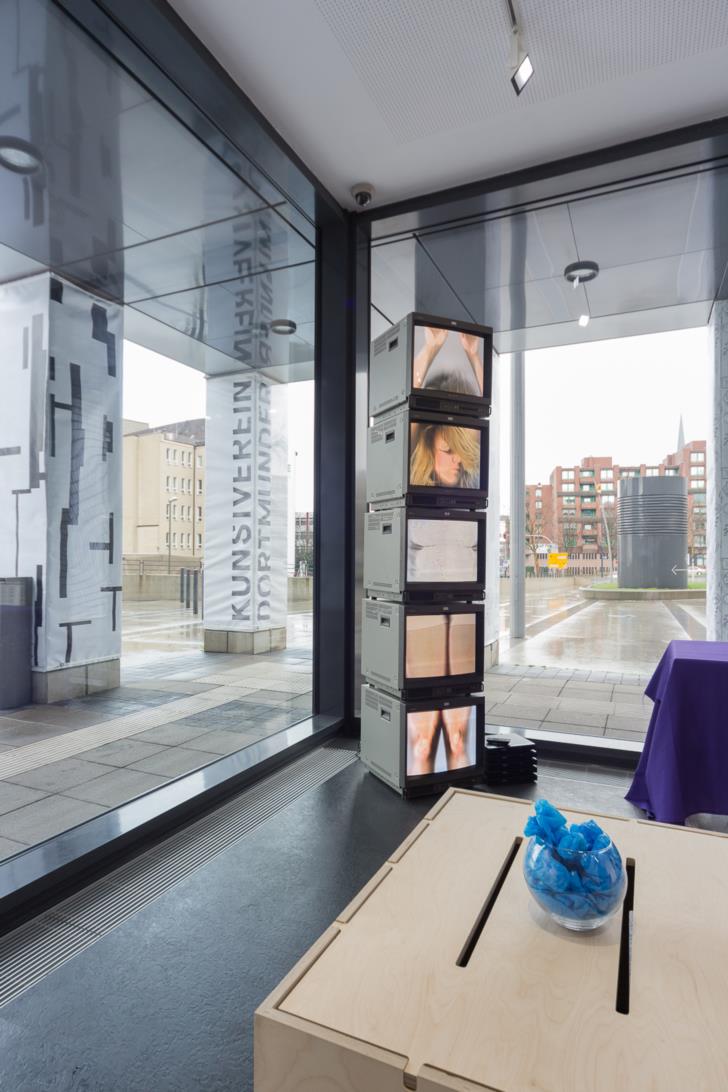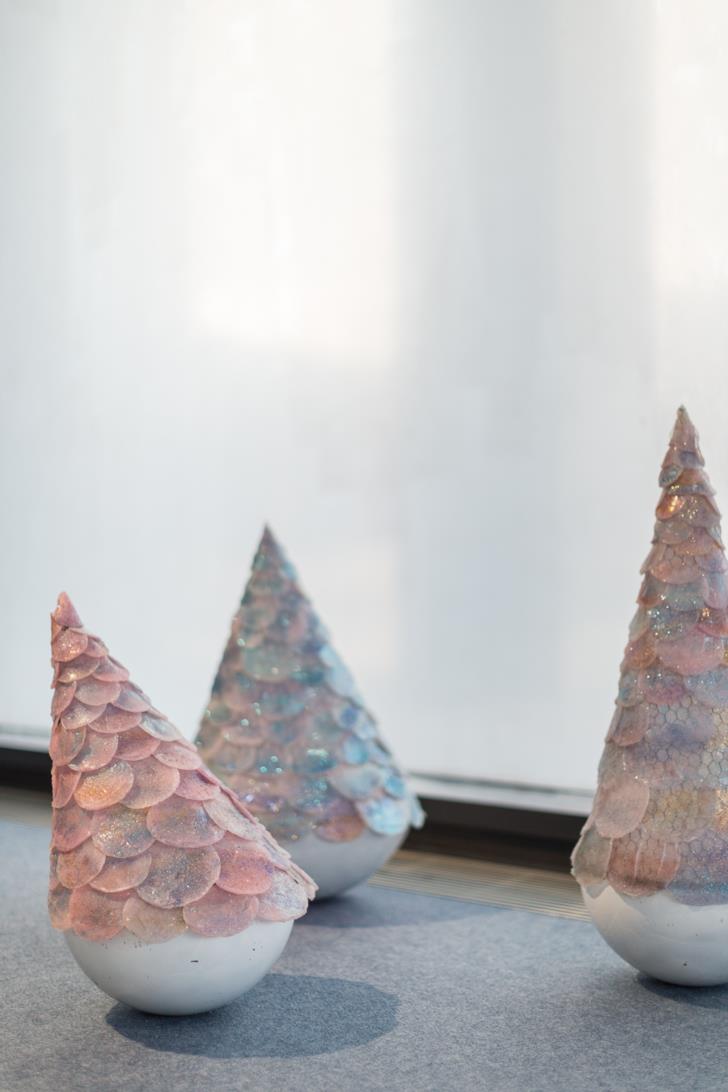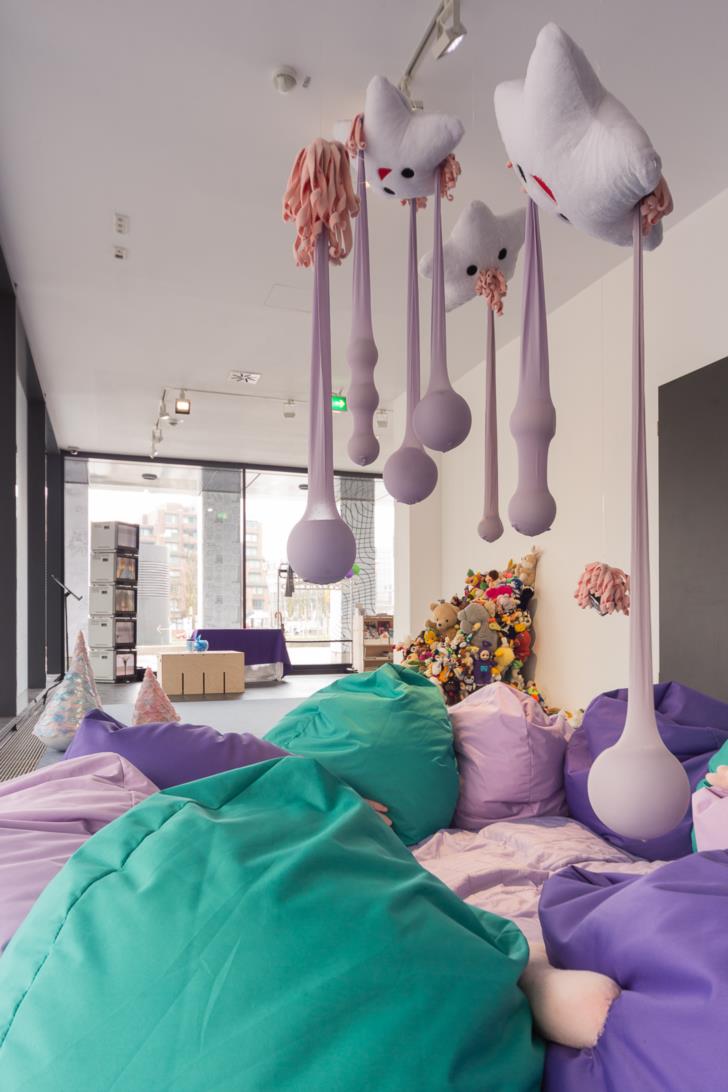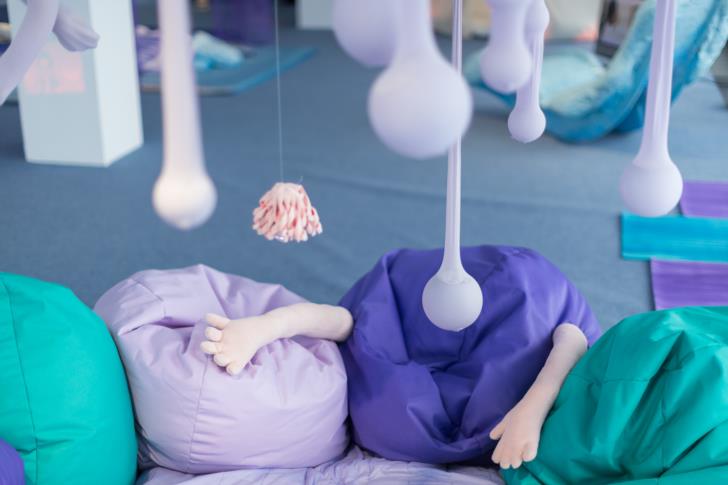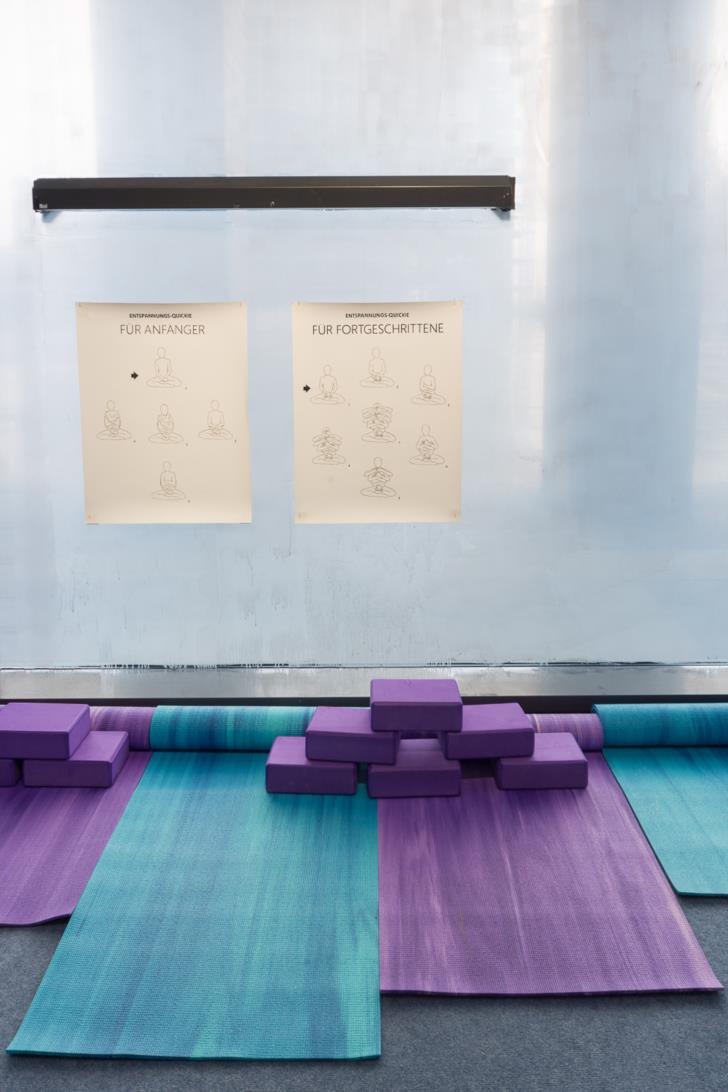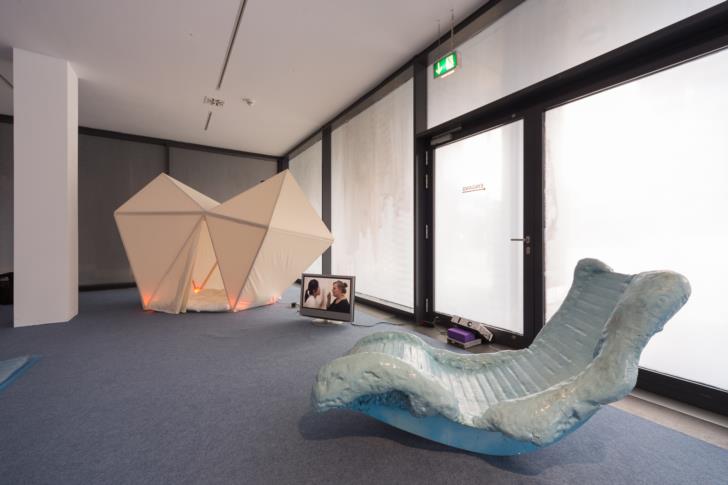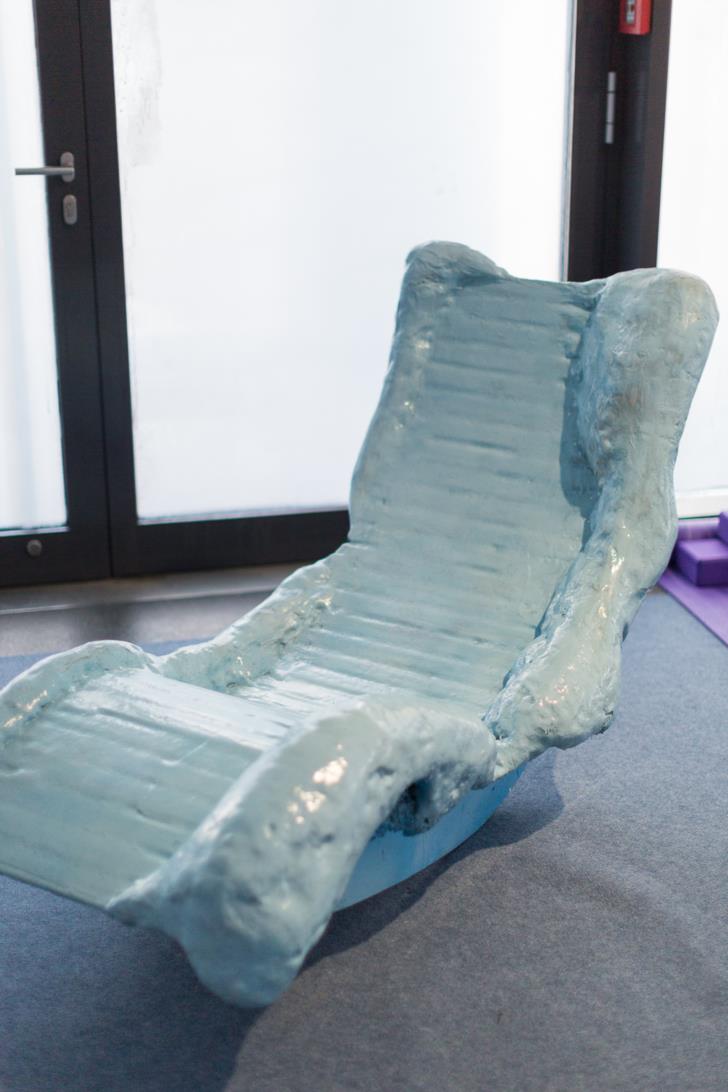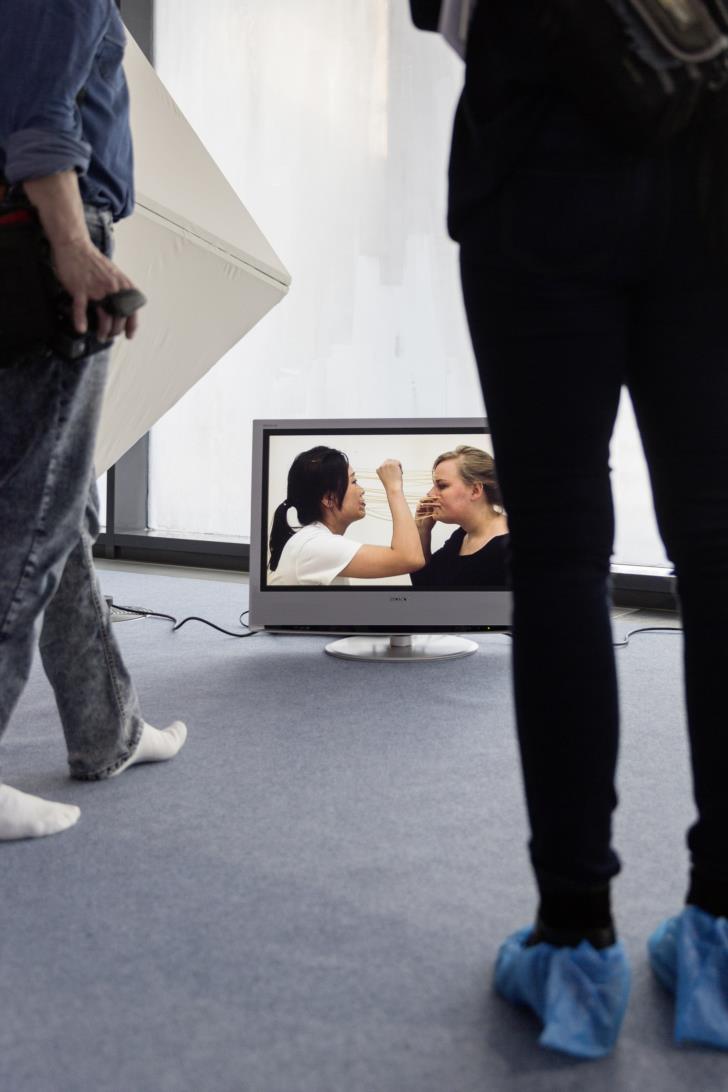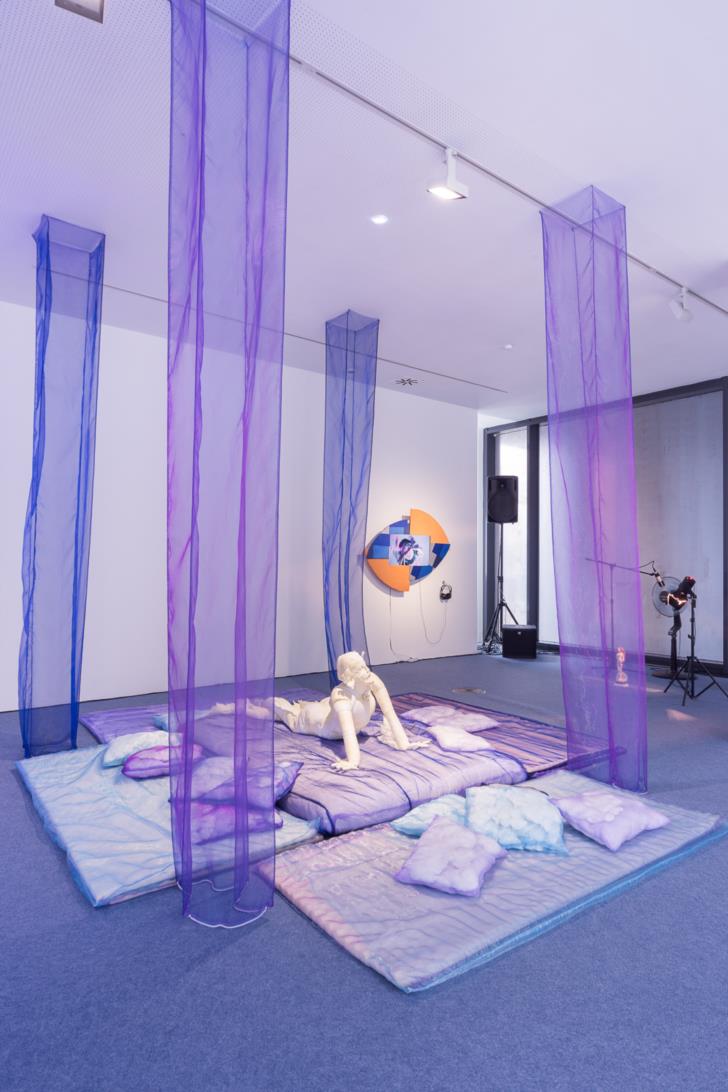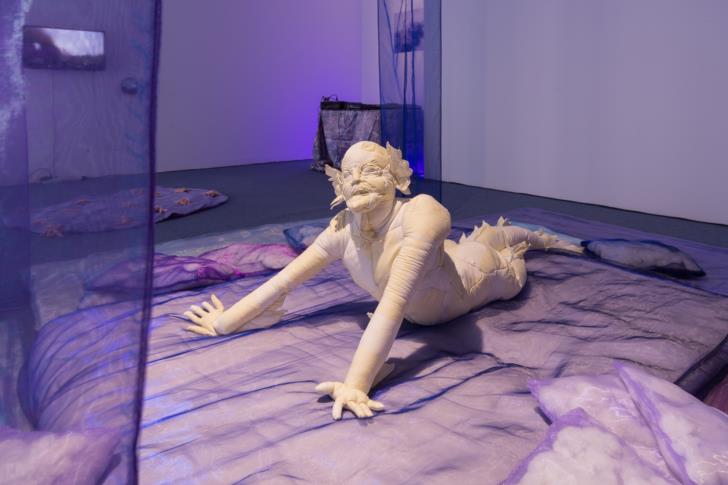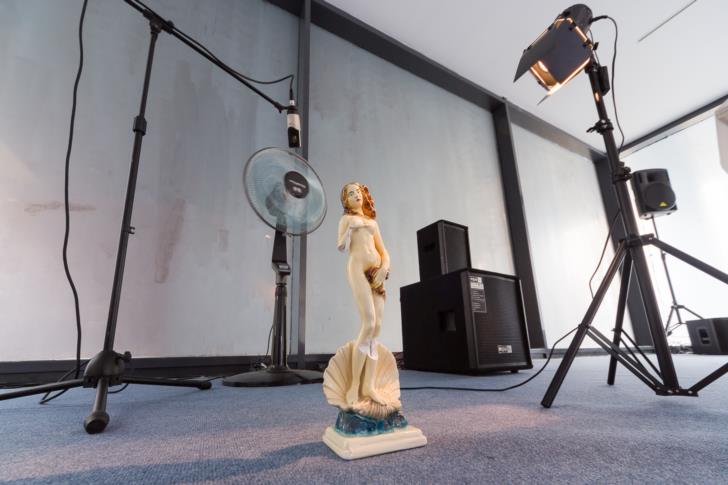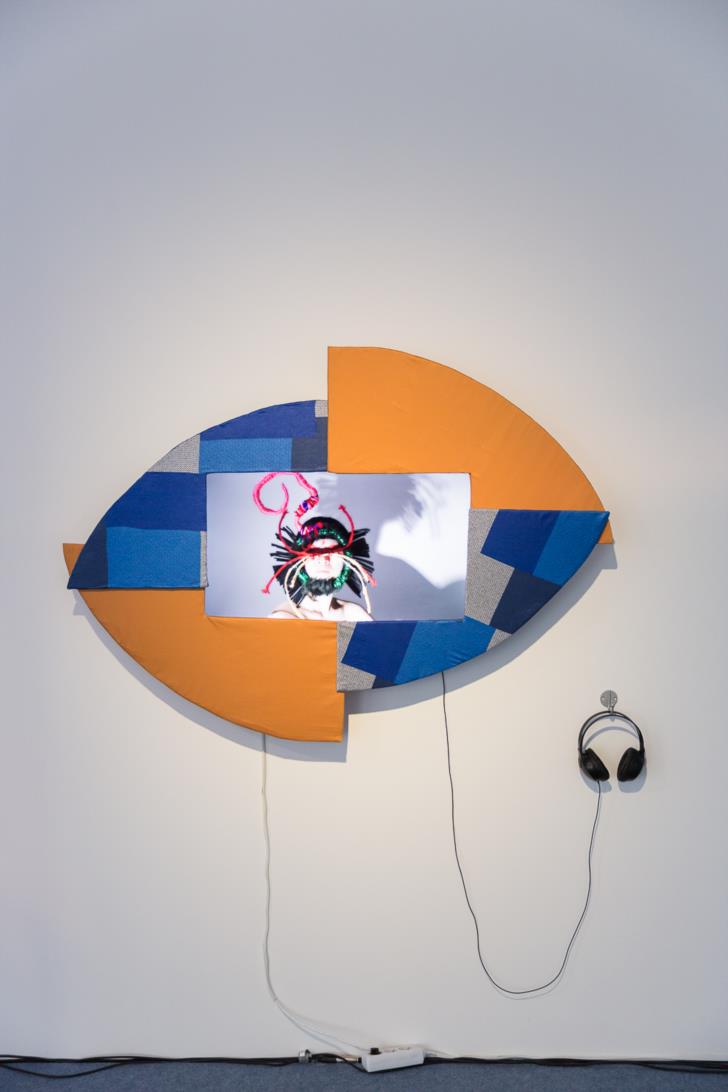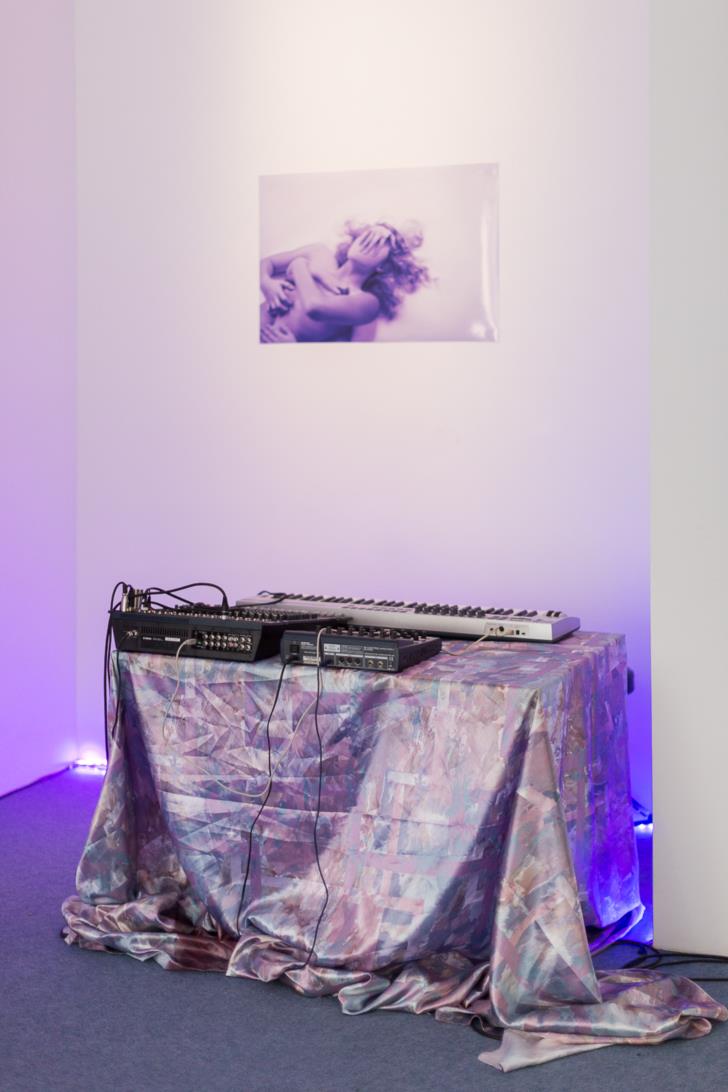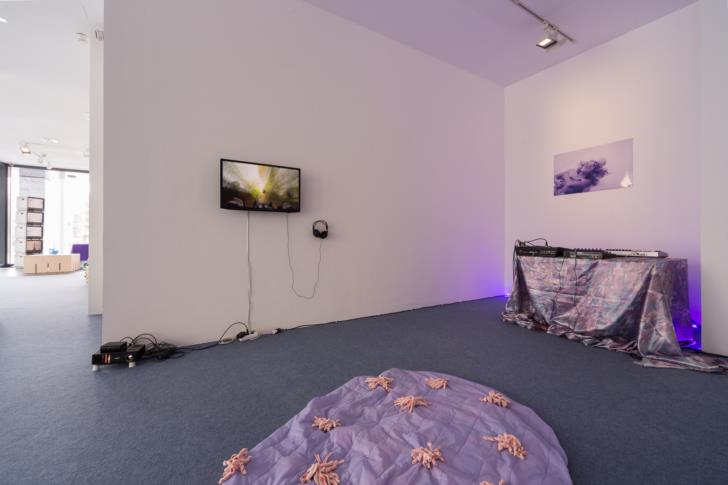Klasse Shana Moulton
to seek out, to explore, to doze, to snooze
7 March – 3 May 2015
With Jennifer Biemer, Lisa Blumendeller, Daniel Bonrath, Julia Cremer, Yi Cui, Paul (M.M) Dörper, Kathrin Heyer, Gilsuk Ko, Lea Landwehr, Janina Lemparty, Hannah Menzel, Minori Munetomo, Vanessa Möbes, Meike Roolfs, Kenny Rüdiger, Frédéric Schmidt, Elisabeth (Lis) Schröder, Mila Stoytcheva, Mileva Testas, Charlotte & Therese Watolla, Julia Warnecke, Jana Weigelt-Harth, Pia Weitkamp und Matthias Zahlten
The Exhibition to seek out, to explore, to doze, to snooze by the students in Klasse Moulton (Art Academy Münster) presents itself as a comfort-zone, which is intended to be explored by visitors with all senses. Within it the theme of the cooperation-partner, the Frauenfimfestival Dortmund/Köln, is displayed – the program stands this year under the sign of “comfort.” The installation in the Dortmunder Kunstverein becomes a lobby for the festival and invites the visitors to relax and to interact between screenings and lectures.
The concept of the exhibition was created from two underlying aspects: On the one hand is the concept of the Snoezelen, developed in the Netherlands in the 1970s, on the other is Nicolas Bourriaud’s notion of Relational Aesthetics from the 1990s. The word Snoezelen describes a therapy consisting of atmospheric rooms, in which light, sound and soft furniture provide a calm surrounding for subjective exploratory activity and relaxation. The term Relational Aesthetics serves as an underlying art-theoretical structure for the students in the class. Bourriaud defines Relational Aesthetics as an art-form in which the substrate is formed through inter-subjectivity; its central theme is “being-together”.« (Nicolas Bourriaud: Relational Aesthetics. Paris 2002, S. 15). In the exhibition, Klasse Moulton raises the art-object back to a more active position, a position which wants to be experienced subjectively and does not necessarily propagate communication to others.
The installation isn´t intended to force community on the audience but is understood as a playground of “Being-Together.”If “comfort” is understood as a refuge from the stressful world of work or the shock of catastrophic global events, this accumulation of artistic interpretations of “comfort” highlights the relevance of relaxation. The diverse impressions of the installations, videos and performances overlap and deconstruct the too beautiful, too calm comfort, until the melodramatic trauma of modern uncanniness comes to light. (Extract of the text from Matthias Zahlten, Klasse Moulton)
In cooperation with


Kindly supported by
![]()

